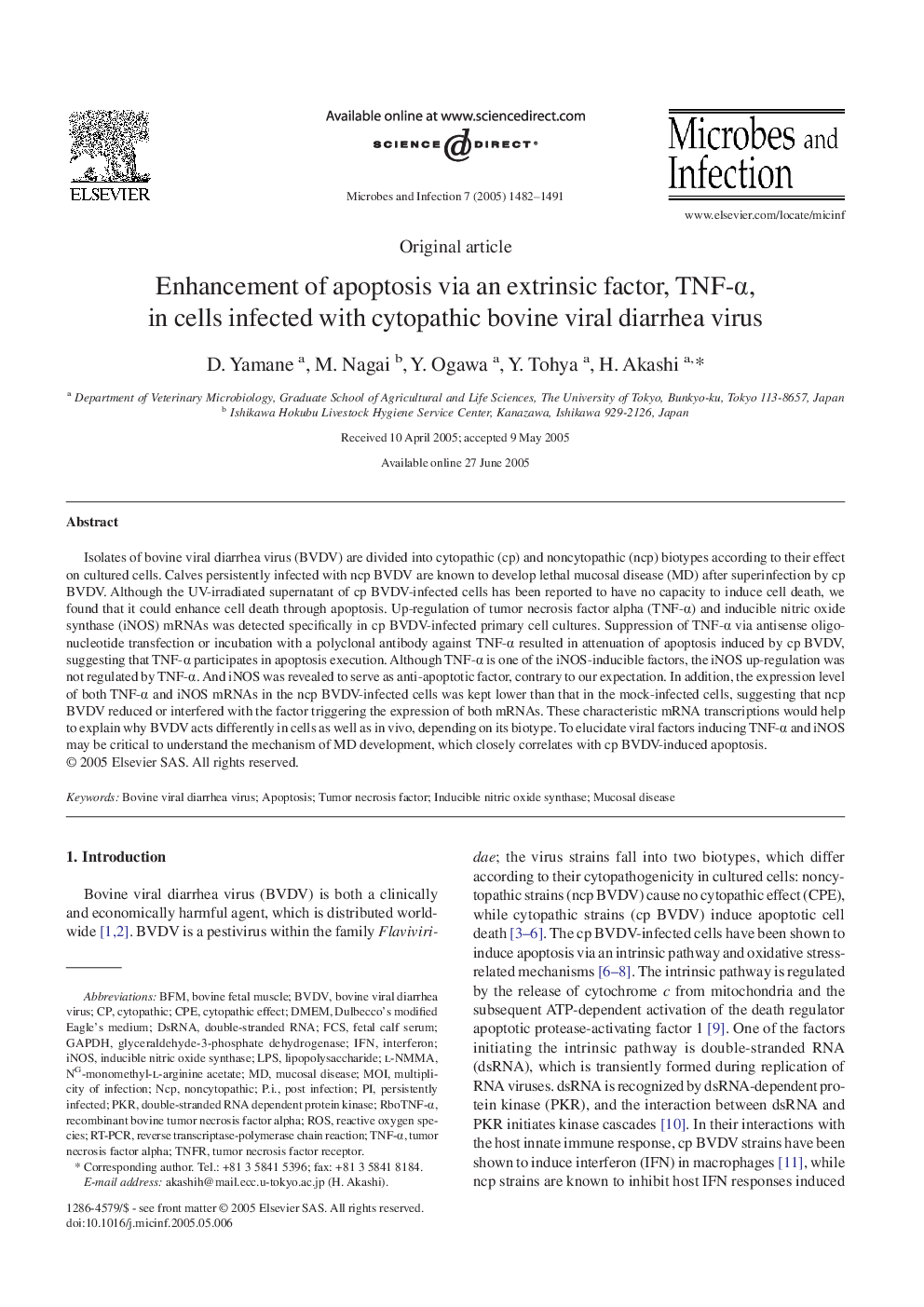| Article ID | Journal | Published Year | Pages | File Type |
|---|---|---|---|---|
| 9282963 | Microbes and Infection | 2005 | 10 Pages |
Abstract
Isolates of bovine viral diarrhea virus (BVDV) are divided into cytopathic (cp) and noncytopathic (ncp) biotypes according to their effect on cultured cells. Calves persistently infected with ncp BVDV are known to develop lethal mucosal disease (MD) after superinfection by cp BVDV. Although the UV-irradiated supernatant of cp BVDV-infected cells has been reported to have no capacity to induce cell death, we found that it could enhance cell death through apoptosis. Up-regulation of tumor necrosis factor alpha (TNF-α) and inducible nitric oxide synthase (iNOS) mRNAs was detected specifically in cp BVDV-infected primary cell cultures. Suppression of TNF-α via antisense oligonucleotide transfection or incubation with a polyclonal antibody against TNF-α resulted in attenuation of apoptosis induced by cp BVDV, suggesting that TNF-α participates in apoptosis execution. Although TNF-α is one of the iNOS-inducible factors, the iNOS up-regulation was not regulated by TNF-α. And iNOS was revealed to serve as anti-apoptotic factor, contrary to our expectation. In addition, the expression level of both TNF-α and iNOS mRNAs in the ncp BVDV-infected cells was kept lower than that in the mock-infected cells, suggesting that ncp BVDV reduced or interfered with the factor triggering the expression of both mRNAs. These characteristic mRNA transcriptions would help to explain why BVDV acts differently in cells as well as in vivo, depending on its biotype. To elucidate viral factors inducing TNF-α and iNOS may be critical to understand the mechanism of MD development, which closely correlates with cp BVDV-induced apoptosis.
Keywords
PKRdsRNAiNOSBVDVRT-PCRGAPDHTNFRCPEFCSBFMDMEMLPSNCPL-NMMAp.i.MOIDulbecco's modified Eagle's mediumdouble-stranded RNAROSCytopathic effectinterferonIFNPersistently infectedmucosal diseasetumor necrosis factor alphaApoptosisfetal calf seruminducible nitric oxide synthasecytopathicpost infectiontumor necrosis factorTNF-αlipopolysaccharideReverse transcriptase-polymerase chain reactionbovine viral diarrhea virusmultiplicity of infectionglyceraldehyde-3-phosphate dehydrogenaseReactive oxygen speciestumor necrosis factor receptor
Related Topics
Life Sciences
Immunology and Microbiology
Immunology
Authors
D. Yamane, M. Nagai, Y. Ogawa, Y. Tohya, H. Akashi,
